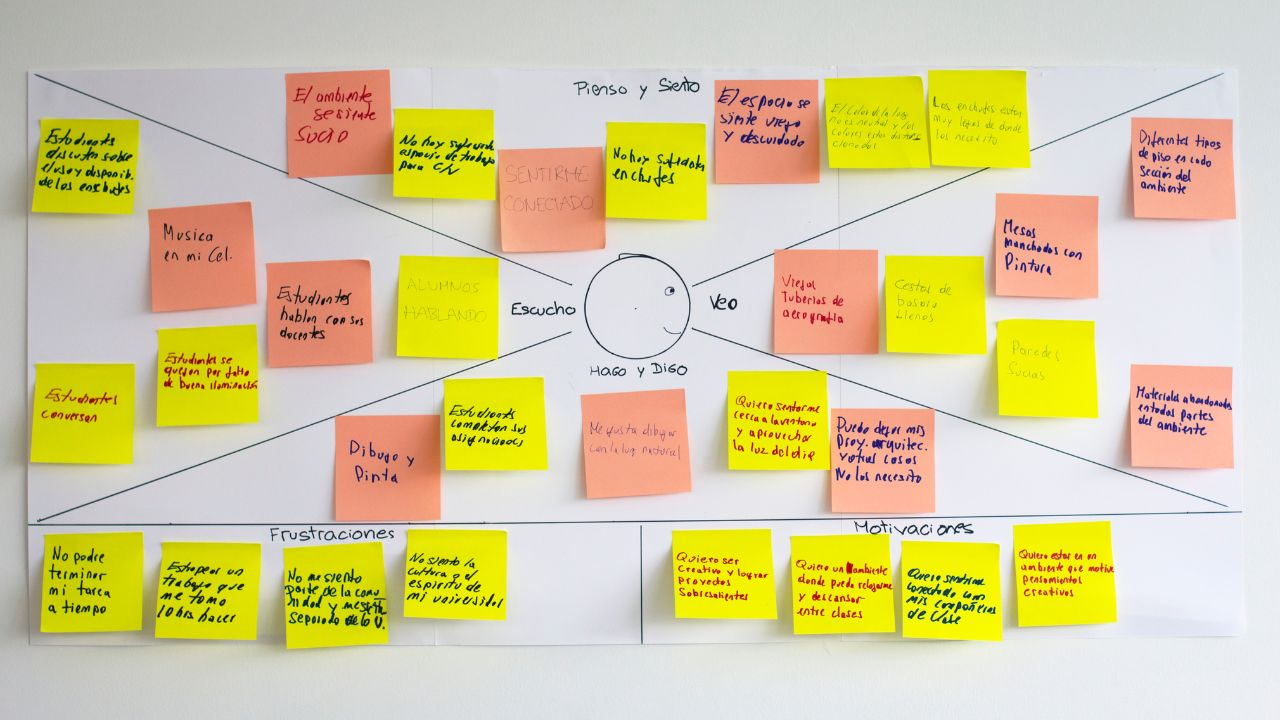Are you looking to boost organic rankings and improve content strategy in today’s ever-evolving digital landscape? Look no further than the topic cluster! This powerful content organization method has the potential to transform your content marketing approach and drive your website to the top of search engine results pages (SERPs). So, buckle up and get ready to explore the world of topic clusters and how they can supercharge your online presence.

Key Takeaways
- Create a comprehensive content strategy with topic clusters to boost organic rankings.
- Master keyword research, on-page SEO best practices, and mobile-friendly design strategies for optimal performance.
- Analyze and adjust your content marketing strategy based on results to stay ahead of the game!
Understanding The Topic Cluster Model
At its core, the Topic Cluster Model is a strategy that involves creating a “pillar” page that offers a broad overview of a main topic. Surrounding this pillar are various subtopics, each covered in individual articles or content pieces. These subtopics are interlinked with the pillar page, creating a cohesive and interconnected content structure.

Topic clusters have become a game-changer in the realm of content marketing. This ingenious method, known as the topic cluster model, allows you to create topic clusters by organizing content around a central pillar page, supported by related cluster content, all connected through internal linking. The result? A cohesive and easy-to-navigate content structure that both search engines and users adore.
But how exactly does the topic cluster model work?
The three essential elements of a topic cluster are the pillar article, content clusters, and hyperlinks. These three elements together form a comprehensive whole. These components work in harmony to create a comprehensive content strategy that improves SEO and enhances the user experience. Creating a rich, interconnected web of content that search engines can’t resist is achievable when you concentrate on a core topic and branch out into related subtopics.
Pillar Pages
At the heart of every topic cluster lies the pillar page. This in-depth, comprehensive article covers a broad topic and serves as the foundation for the entire cluster. Think of it as the nucleus of your content universe, around which all cluster content gravitates. Pillar pages are designed to become an echo chamber of context, relevance, and authority for search engines, helping your content rank higher for relevant search queries.
The development of an effective pillar page necessitates meticulous planning and execution. Here are the steps to follow:
- Conduct a content audit to ensure you’re not duplicating existing content on your site.
- Craft a long-form article (at least 2,000 words) that covers the core topic comprehensively and includes subheadings and links to related content, such as blog posts.
- Set the stage for a powerful topic cluster that can boost your search engine results and enhance your site structure by providing a thorough overview of the topic and linking to related content.
Cluster Content
While pillar pages provide the foundation, cluster content is where you can truly dive deep into the specifics of your core topic. Cluster content consists of smaller, related articles that focus on particular aspects of the core topic, offering additional value and information to your readers. These articles work hand-in-hand with the pillar page, reinforcing its authority and providing a seamless link between the central topic and its subtopics.
Crafting captivating cluster content involves applying general best practices for writing blog content and ensuring that each blog post offers something unique. Here are some tips to help you create effective cluster content:
- Make sure your cluster pages are SEO-optimized by including long-tail keywords that cater to search intent.
- Craft informative and engaging content that provides valuable resources for your audience.
- Ensure that each piece of cluster content strengthens the overall impact of your topic cluster strategy.
By following these tips, you can create cluster content that captivates your audience and boosts your SEO efforts.
Internal Linking
Internal linking is the glue that holds your topic cluster together. By connecting the pillar page to the cluster content and vice versa, you create a cohesive structure that both search engines and users can easily navigate. This interconnected web of content allows search engines to understand the relationship between your content pieces, ultimately boosting your website’s visibility and search rankings.
To strategically place internal links within your topic cluster, consider the natural flow of content and user engagement. For instance, if a term appears multiple times on a page but there’s a separate section dedicated to the subtopic, the link should be placed there for maximum impact. Thoughtful implementation of internal linking builds a well-organized and user-friendly content structure that can drive your topic cluster’s success.
Implementing a Topic Cluster Strategy

Now that you understand the components of a topic cluster, it’s time to put this knowledge into action. Implementing a topic cluster strategy involves selecting a core topic, identifying relevant subtopics, and creating high-quality pillar and cluster content to boost your organic rankings. Focusing on these key steps allows building a content strategy that resonates with your target audience and improves your website’s visibility in search engines.
Before diving into content creation, begin by selecting a core topic that will resonate with your target audience and has the potential to cover a range of related topics. This will act as the foundation of your topic cluster, allowing you to explore various subtopics and create a comprehensive and interconnected content structure. With a solid core topic in place, you can then move on to researching and identifying relevant subtopics that will support your pillar content and make up your cluster content.
Creating captivating pillar and cluster content is crucial to the success of your topic cluster strategy. Here are some tips to follow:
- Focus on addressing the needs and interests of your target audience.
- Follow SEO best practices to ensure your content is both engaging and informative.
- Craft high-quality content that speaks to your audience and adheres to SEO guidelines.
By following these tips, you can create a powerful topic cluster that can supercharge your organic rankings and elevate your content strategy.
Choosing Your Core Topic
Your core topic should be relevant to your target audience and broad enough to support multiple related articles. It’s essential to choose a core topic that aligns with your brand, industry, and audience interests. By doing so, you’ll be able to create content that not only satisfies your readers’ needs but also establishes your expertise within your niche.
Consider the interests of your target audience, the potential for additional topics, and the ability to create comprehensive content when selecting your core topic. For example, health and wellness, home improvement, and travel are all great core topics that can be the basis for multiple related articles. Choosing a core topic that resonates with your audience and supports a diverse range of subtopics lays the groundwork for a successful topic cluster strategy.
Identifying Subtopics
Once you’ve chosen your core topic, it’s time to identify relevant subtopics that will make up your cluster content. These subtopics should be closely related to your core topic and provide opportunities for in-depth exploration. To uncover subtopics, you can:
- Research common questions your target audience has
- Analyze your competitors’ content
- Use tools like AnswerThePublic and Google Trends to discover trends and gaps in your industry.
Identifying subtopics that are relevant and valuable to your audience enables the creation of cluster content that addresses their needs and interests while reinforcing the authority of your pillar content. This approach ensures that your topic cluster strategy remains focused and cohesive, ultimately leading to an improved user experience and higher search engine rankings.
Creating Pillar and Cluster Content
With your core topic and subtopics identified, it’s time to create engaging and informative pillar and cluster content. Your pillar content should provide a comprehensive overview of your core topic, covering all the essential points and establishing your expertise in the subject matter. This long-form content will serve as the foundation for your topic cluster and act as a gateway for your audience to explore the related cluster content.
When crafting your cluster content, focus on diving deeper into the specific aspects of your core topic. Each cluster article should address a particular subtopic, providing valuable insights and information for your readers. Creating focused and informative cluster content provides your audience with valuable resources and strengthens the overall impact of your topic cluster strategy.
As you create your pillar and cluster content, be sure to keep SEO best practices in mind. This includes conducting thorough keyword research, optimizing title tags, meta descriptions, and header tags, and ensuring a mobile-friendly design. Adhering to these best practices can enhance the visibility and ranking of your content, ultimately driving more organic traffic to your website.
Optimizing Topic Clusters for SEO

Optimizing your topic clusters for SEO is crucial to boosting your organic rankings and driving more traffic to your website. To achieve this, you need to focus on three key areas: keyword research, on-page SEO best practices, and mobile-friendly design. By mastering these strategies, you can ensure that your topic clusters are not only engaging and informative but also primed to climb the search engine results pages (SERPs).
Keyword research is the foundation of any successful SEO strategy. By identifying relevant terms and phrases to include in your pillar and cluster content, you can cater to search intent and ensure that your content is discovered by your target audience. On-page SEO, on the other hand, involves optimizing elements like title tags, meta descriptions, and header tags to improve the visibility and ranking of your content. Lastly, having a mobile-friendly design is essential in today’s digital landscape, as more and more users access content on mobile devices.
Focusing on these three crucial aspects of search engine optimization allows the creation of topic clusters that resonate with your audience and perform well in search engines. This, in turn, will drive more organic traffic to your website and help you establish a strong online presence.
Keyword Research and Usage
Performing keyword research is crucial when creating your pillar and cluster content. This process helps you identify relevant terms and phrases to include in your content, ensuring that it caters to search intent and reaches your target audience. To identify long-tail keywords for your pillar and cluster content, use keyword research tools and search engines to find related keywords with lower search volume but higher specificity.
Using keywords effectively in your content is essential to avoid keyword stuffing and ensure that your content remains engaging and informative. Be sure to incorporate your target keywords naturally throughout your content, adding value to your audience and enhancing readability. Focusing on both keyword research and usage enables the creation of content that appeals to your audience and performs well in search engines.
On-Page SEO Best Practices
Following on-page SEO best practices is crucial to improving the visibility and ranking of your content. Start by optimizing your title tags, ensuring they accurately describe the content of the page and include relevant keywords. Next, craft compelling meta descriptions that provide a brief overview of the page’s content and encourage users to click on your search result.
Optimizing header tags is another essential aspect of on-page SEO. Ensure that each header tag accurately reflects the content of the section and includes variations of your target keywords to improve search engine visibility.
Adhering to these on-page SEO best practices ensures that your content is primed to perform well in search engines and attract more organic traffic to your web pages.
Mobile-Friendly Design
In today’s digital landscape, having a mobile-friendly website is crucial. With more and more users accessing content on mobile devices, it’s essential to ensure that your website and content are optimized for mobile viewing. A mobile-friendly design not only provides a better user experience but can also positively impact your SEO performance and organic rankings.
To create a mobile-friendly design, consider the following:
- Use a responsive design
- Keep the design simple
- Use large buttons and easy-to-read fonts
- Avoid pop-ups
- Optimize for speed
- Include clear call-to-action buttons
- Think about thumb-friendly design
Ensuring that your website and content are mobile-friendly caters to the growing number of mobile users and improves your overall SEO performance.
Analyzing and Improving Topic Cluster Performance

To maximize the success of your topic cluster strategy, it’s essential to analyze its performance and make adjustments as needed. Tracking relevant metrics, identifying content gaps, and refining your strategy based on the results ensures that your topic clusters continue to drive organic traffic and boost your search rankings.
Monitoring your topic cluster’s performance allows you to:
- Identify areas for improvement
- Make informed decisions about your content strategy
- Address content gaps
- Optimize existing content
- Refine your approach to new content creation
By continually improving your topic cluster strategy, you can stay ahead in the ever-evolving world of SEO.
Tracking Metrics
Monitoring relevant metrics is crucial to gauging the effectiveness of your topic cluster strategy. Keep an eye on metrics like organic traffic, bounce rate, and conversion rate to understand how your content performs and identify improvement areas.
Using tools like Google Analytics or HubSpot’s Content Strategy Tools, you can track a variety of performance metrics, such as:
- Sessions
- New contacts
- New customers
- Conversion rates
Regularly monitoring these metrics allows you to gain valuable insights into the performance of your topic clusters and make data-driven decisions to optimize your content and boost your organic rankings.
Identifying Content Gaps
Identifying content gaps within your topic clusters is key to strengthening your topical authority and improving your content’s performance. Uncovering areas where your content is lacking or could be expanded upon enables the creation of new content to fill these gaps and provide a more comprehensive understanding of your core topic.
To identify content gaps, follow these steps:
- Examine your existing content and analyze audience feedback, search queries, and competitor content to discover areas where your content could be improved or expanded.
- Once you’ve identified these gaps, create new content that addresses these areas and fills the gaps.
- This will further bolster your topical authority and enhance your overall content strategy.
Adjusting Strategy Based on Results
Like any marketing strategy, continual analysis and adjustment of your content marketing strategy based on the results is vital. Making improvements to existing content and refining your approach to new content creation ensures that your topic clusters remain effective and continue to drive organic traffic to your website.
To make data-driven adjustments to your strategy, consider:
- Updating and optimizing your existing content
- Identifying and addressing content gaps
- Adjusting your internal linking strategy to ensure that your topic clusters are well-connected and easily navigable for users
By continually monitoring the performance of your refined content strategy and making further adjustments as needed, you can stay ahead in the ever-evolving world of SEO.
Case Studies and Examples
Learning from the success of others can be incredibly valuable when it comes to implementing your own topic cluster strategy.
One example of a website that uses topic clusters is HubSpot. HubSpot is a marketing and sales software company that provides a wide range of resources and educational content to help businesses grow.
HubSpot’s website is organized into topic clusters, where each cluster focuses on a specific topic related to marketing, sales, or customer service. For example, they have a topic cluster dedicated to inbound marketing, which includes subtopics like content marketing, email marketing, social media marketing, and SEO.
Within each topic cluster, HubSpot creates pillar content, which is a comprehensive and in-depth piece of content that serves as the main hub for that topic. This pillar content provides a broad overview of the topic and links to more detailed articles and resources within the cluster.
The subtopics within the cluster are then linked back to the pillar content, creating a hierarchical structure that helps search engines understand the relationships between the different pieces of content. This not only improves the website’s SEO by signaling the relevance and authority of the pillar content but also provides a better user experience by guiding visitors to related content on the same topic.
By using topic clusters, HubSpot is able to organize their content in a way that is both user-friendly and search engine-friendly. It allows them to cover a wide range of topics in a comprehensive manner while also ensuring that their content is easily discoverable and interconnected. This strategy helps them attract and engage their target audience, establish thought leadership in their industry, and drive organic traffic to their website.
Examining these successful examples provides insight into what works, what doesn’t, and how to apply these strategies to your own content. Use their success as a source of inspiration and motivation to:
- Create your own powerful topic clusters
- Drive organic traffic
- Boost search engine rankings
- Elevate your content strategy to new heights.
Summary
In conclusion, topic clusters are a powerful and effective way to organize and optimize your content for better search engine rankings and user experience. By understanding the components of a topic cluster, selecting a core topic, identifying subtopics, creating pillar and cluster content, and optimizing for SEO, you can create a content strategy that resonates with your audience and boosts your organic rankings. So, take the plunge and start implementing topic clusters today to supercharge your content marketing efforts and elevate your online presence.